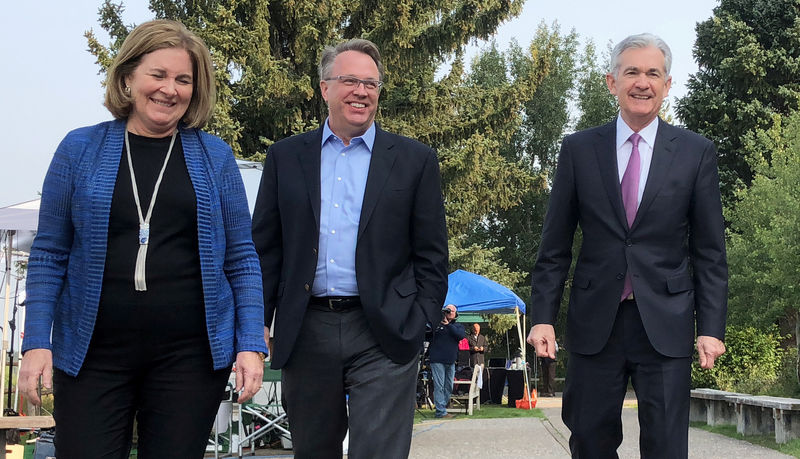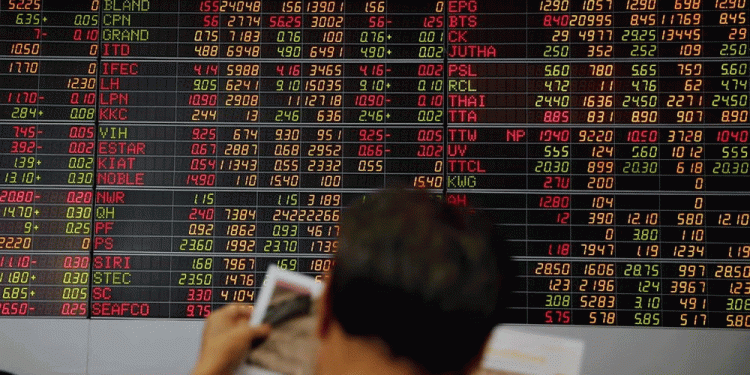 © Reuters. FILE PHOTO – Federal Reserve Chairman Jerome Powell (R) speaks with New York Fed President John Williams and Kansas City Fed President Esther George (L) at the Kansas City Fed’s annual Economic Symposium in Jackson Hole
© Reuters. FILE PHOTO – Federal Reserve Chairman Jerome Powell (R) speaks with New York Fed President John Williams and Kansas City Fed President Esther George (L) at the Kansas City Fed’s annual Economic Symposium in Jackson HoleNEW YORK (Reuters) – Vulnerabilities linger behind the hot U.S. labor market in which some communities remain underemployed and lack the skills and training that would protect them as the economy modernizes, two Federal Reserve policymakers said on Friday.
The comments underscore why the U.S. central bank is only gradually raising interest rates even while unemployment is the lowest since the 1960s. They also highlight the Fed’s narrow ability, limited mainly to public speeches, to encourage lawmakers and employers to adopt policies that might boost productivity and economic growth.
“There is a diversity of experience and economic opportunity throughout our country,” said New York Fed President John Williams (NYSE:). “The skills gap, and the uneven economic recovery among different communities, are consistent themes that I hear and see in my travels.”
While unemployment is low at 3.7 percent, joblessness for blacks is about twice that of whites, while a broader measure of underemployment is 7.4 percent. The jobs of women, non-whites, and lower-income workers are typically more vulnerable to being lost to automation, making training and education more vital.
“Business has to start viewing workforce development as an investment, rather than a social service,” said Philadelphia Fed President Patrick Harker, speaking alongside Williams at a workforce conference at the central bank’s New York headquarters.
The Fed on Thursday left rates unchanged at just over 2 percent, though in a statement it paved the way to more monetary tightening next month and into next year.
Fusion Media or anyone involved with Fusion Media will not accept any liability for loss or damage as a result of reliance on the information including data, quotes, charts and buy/sell signals contained within this website. Please be fully informed regarding the risks and costs associated with trading the financial markets, it is one of the riskiest investment forms possible.
Source: Investing.com



























